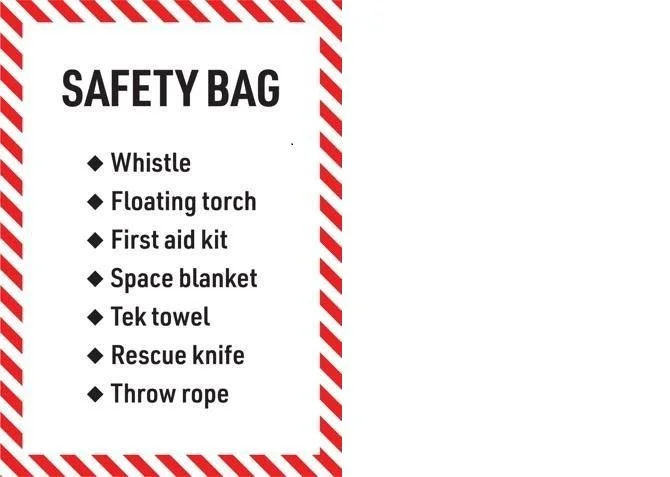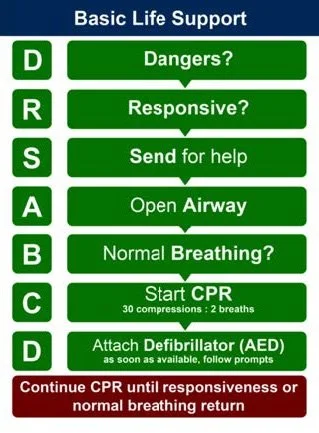Emergency Rescue Management Plan
Emergency & Rescue Management Plan
See also Safety and Risk Warning
Responsibilities:
Each participant must be aware of the risks inherent in sailing, and the actions required to mitigate them. All sailors should: ensure their equipment is appropriately maintained, wear PFDs and adequate protection from heat / cold, and carry sufficient hydration. Head protection is highly recommended and available. If the conditions are unsafe for your level of ability, or if you have consumed drugs or alcohol or have an unmanaged medical illness, do not sail (or operate the RIB).
Each participant must provide ‘all possible help to any person or vessel in danger’¹, including people not associated with the club.
The PRO, with support from COTD and Co-COTD, must prepare for reasonably foreseeable risks and take all reasonable steps to control and manage them; including, where appropriate, retiring sailors or cancelling racing.
DBSC has an ongoing responsibility to identify and mitigate risks, to provide training and support to members in relation to such risks, and to review this plan as new risks or new controls are identified².
Key risks include:
Trauma: especially head and cervical spine, internal bleeding, external wounds, broken bones
Medical event: cardiac arrest, seizure, hypoglycaemia
Drowning: may be primary or follow trauma or medical event
Exposure: heat, sunburn, cold, dehydration.
Preparation:
Briefing should include weather predictions and expected conditions, with appropriate advice to sailors who may lack the experience or fitness required.
Ensure that RIBs are prepared as per the DBSC PRO / COTD guides including safety equipment. The primary RIB will be the main rescue vessel, and should always have a minimum of 2 persons aboard to pull an injured person out of the water. If winds over 20 knots are expected, a second RIB should be launched. The Jazzman is not suitable for pulling an incapacitated person aboard and should not be the only support vessel during racing.
Radio: check that Jazzman, RIBs and clubhouse are all in radio contact on VHF Ch73.
During racing
RIBs and Jazzman must maintain effective watch for any sailors in difficulty, and monitor radio frequencies above. The PRO has discretion to cancel racing in the event of an incident, or if conditions are becoming unsafe.
The closest competitor to any capsized boat must establish visually and verbally that its crew are safe, even if this means sailing out of his or her way. This is an obligation of every boat that becomes the closest boat until the crew is back on board.
In an Accident or Emergency
The PRO is responsible for coordinating the response. He or she will communicate with and be assisted by the COTD / Co-COTD and by any other person he or she may require to assist. Laser anchors are carried in the RIBs in case a participant needs to cease racing to assist or to secure an abandoned vessel.
If an accident occurs involving others not associated with DBSC, as well as providing assistance, both parties must produce any licence required to be held, and details of the vessel and master as per RMS reporting guidlines³.
The PRO is responsible for contacting any external agency.
Calls To External Agencies
For on-water assistance and incidents involving multiple vessels or people – NSW Maritime VHF Ch16. PanPan (urgent situation but no immediate life threat) or Mayday: VHF Ch16. If no answer on VHF Ch16, phone 000 (triple zero) or call Port Authority on VHF Ch13.
For an ambulance to meet the RIB on land – dial 000 (triple zero) from a phone.
Decide on a location to beach and provide clear notification to ambulance:
Preferred location: DBSC/ 18 Footers – 79 Bay St Double Bay. The eastern beach has greater protection from waves and has easier road access.
Alternative Location: Woollahra Sailing Club – 2 Vickery Ave, Rose Bay. Phone 02 9371 9805 or radio on VHF Ch77 and VHF Ch13.
The nearest public hospital is St Vincent’s Hospital (corner of Darlinghurst Road and Oxford Street, Darlinghurst). Phone 02 8382 1111. Emergency Department number is 02 8382 2520.
Rescue
Protect from further injury or exposure. See ‘Danger’ below.
Commence Basic Life Support (if required) on water. This should include use of the defibrillator if appropriate (see below).
Adjust speed in waves to avoid further injury and proceed to beach ASAP.
If the person can safely mobilise, assist them ashore.
If the person is incapacitated or there is concern for spine injury, await ambulance arrival.
The First Aid kits on RIBs contain basic dressings for bleeding control, and a flexible splint. Any on-water first aid is constrained by environmental challenges and should be followed by proper cleaning and assessment ashore.
Basic Life Support for DBSC
Basic Life Support adapted for DBSC: suggestions in this summary do not replace formal first aid training or familiarity with the Australian Resuscitation Guidelines⁴.
Danger: remove from water — 2 person drag aboard RIB by PFD (take care to keep neck as still and supported as possible in case of suspected spinal injury). Summon help from nearby sailors if needed. Do not put yourself in danger and become a victim.
Response: shake (gently) and shout. If responsive, lay in the recovery position and attend to any injuries.
Send for help: RIB crew contact PRO (on Jazzman) to call 000 / Maritime. Identify nature of emergency and planned landing site (DBSC or Woollahra SC) to meet ambulance.
If unresponsive:
Airway: If full of water or vomit, roll on side to allow to drain. Gentle head tilt / chin lift. Airway opening takes precedence over neck protection / other injuries.
Breathing: Put cheek near mouth and feel for air and look for rise and fall of chest. If not breathing or gasps only, lay flat and commence CPR. Rescue breaths are advised especially if drowning is suspected. While the RIB is in motion, compression-only CPR is recommended.
Circulation: Cut wetsuit / PFD if necessary to access chest. Commence compressions, target rate 120/min, overlapping hands, centre of chest / lower half of sternum, 1/3 depth of chest. Allow chest to recoil fully between compressions. Can use towel or PFD to protect knees. As CPR is started other RIB crew attaches defibrillator and follows prompts (see below) (note, this should be done even if the patient is wet and/or the environment in the RIB is wet). Once safe to do so, other RIB crew to start motor and head to shore. Note compressions are tiring, plan to change operators if practicable. Continue CPR until obvious signs of life or handoff to ambulance.
Defibrillation: use at the earliest time possible can be lifesaving. This should be done even if the patient is wet and/or the environment in the RIB is wet.
The larger RIB carries an Automatic External Defibrillator (AED) during racing. At other times it has a cabinet near the canteen. The 18 Footers also have an AED (behind reception).
Operation is extremely simple (see below). The Heartsine Samaritan ® 500P AED is self-earthed and very safe. To minimise the small risk of water-related failure please expose enough chest to towel-dry the skin around and in between the pads, and minimize water on RIB deck. It should be carried in the larger RIB even if crewmembers are not confident to use it independently. It is splash resistant but please keep dry and protected when not in use.
Automatic External Defibrillator
Press green Power button – follow voice prompts (note, background noise levels may interfere, so if conditions permit cut RIB motor for this phase).
Pull green tab to expose electrodes package.
Expose the whole chest and towel dry. Shaving is not usually required for adhesion but a razor is available.
Peel backing and apply pads as illustrated. Device will prompt: “assessing heart rhythm, do not touch the patient”.
The next prompt will be: “Shock advised”, or “No shock advised”.
If shock advised, the orange Shock button will flash, with prompt “Stand clear of patient, press the orange Shock button now”. Note, this is safe for the operators despite a wet environment — as long as you stand clear, you will not receive a shock.
You will be prompted to begin CPR. Lights and voice prompts will guide speed and depth.
Proceed to shore at safe speed. Next prompt will be in 2 minutes to recheck rhythm / repeat shock.
The manufacturer’s instruction guide is available HERE.
Following an incident:
The PRO is responsible for providing information to the Commodore and to people with direct responsibility for the incident (police, ambulance, hospital) and should include key events and actions, as well as the identity of all people who witnessed the event or were involved in its management. Information should not be provided to people without a direct role in management without authorisation by the Commodore.
A report must be submitted to NSW Roads and Maritime Services (RMS) within 24 hours if:
The incident has resulted in the death of, or injury to, a person
The incident has result in damage in excess of $5000 to a vessel or any other property
Damage or risk to the environment has occurred.
References:
Racing Rules of Sailing 2021-2024 Rule 1.1
https://www.sailing.org/inside-world-sailing/rules-regulations/racing-rules-of-sailing/Club Safety Management. Australian Sailing 2016
https://www.sailingresources.org.au/safety/risk-management/Incident reporting for recreational and domestic commercial vessels
https://www.nsw.gov.au/driving-boating-and-transport/waterways-safety-and-rules/emergencies/incident-response/
https://vir.connect.rms.nsw.gov.au/
https://www.rms.nsw.gov.au/documents/about/forms/45065752-vessel-incident-report.pdfAustralian Resuscitation Council Guidelines
https://resus.org.au/guidelines/







